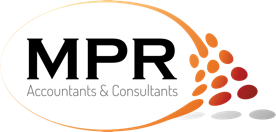18 Sep Prinsjesdag hot topic: Reduced VAT rate from 6% to 9% in 2019
The Dutch Rutte III Cabinet is planning to increase the reduced value-added tax (VAT) rate from 6% to 9% effective on 1st of January 2019. The Senate and the House of Representatives must still agree to the change which is intended to be part of the Tax Plan 2019 that will be published on 18th of September. There will be several consequences for businesses which must be taken into account while heading towards the coming year.
Affected goods and services
The planned increase will be applicable for a wide range of goods and services that now fall under the 6% VAT rate. Among these are for instance the following:
Food and non-alcoholic beverages, medicines, art, books and periodicals, flowers and plants, services of a hairdresser, certain renovations of dwellings, repair of bicycles and clothing, transport of people, sporting facilities, cleaning of residences, provision of accommodation in hotels, and provision of food and drinks in restaurants.
The complete list of all goods and services under the low VAT rate can be found on the Belastingdienst website.
Implementation
It is advisable to prepare for the expected change in advance. For instance, the increased VAT rate will have an effect on administration, invoicing, and the pricing of goods and services. Among other things, attention needs to be paid to the applicable VAT rate.
The Cabinet wants to mitigate the administrative burden of the companies being caused by the VAT change. Thus, the Tax and Customs Administration will not levy the additional tax in 2018 and the 6% rate applies if the transaction which is taking place in 2019 is prepaid in 2018. This concerns all the goods and services under the low VAT rate.
If the payment is taking place in 2019 it will be a subject to the 9% VAT rate. This also needs to be taken into consideration when drafting quotations in 2018 concerning 2019 transactions. In situations where it is not known whether the payment will take place in 2018 or in 2019, it is suitable to put 6 % VAT on the quotation and inform the customer that the VAT will increase to 9% if the payment occurs in 2019.
Considering the pricing, the decision needs to be made whether the 3% VAT increase will be passed on to the customers by increasing the sales price, or if it will be absorbed by the company. In case of business customers, it is important to notice that they are presumably able to deduct the VAT, in contrast to the private consumers who pay the price including VAT.
With the increase of the low VAT, the government wants to shift the tax burden from income to consumption. It is predicted that the effects will be prominent especially in the industries where most of the turnover is coming from the goods and services falling under the low VAT rate. For now, it is important to prepare for the apparent change and follow the announcements from Tax Authorities for further information. Should you have any further questions regarding the VAT increase or need help with the implementation, feel free to contact our office.


No Comments